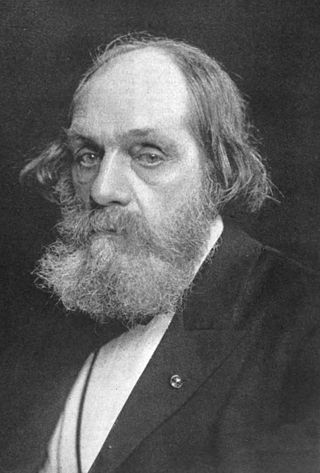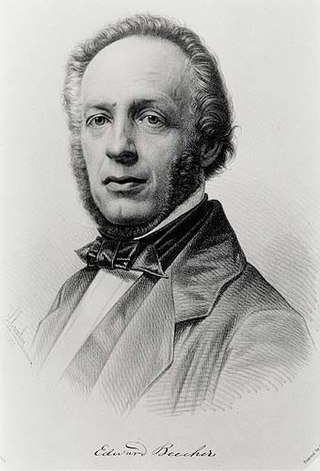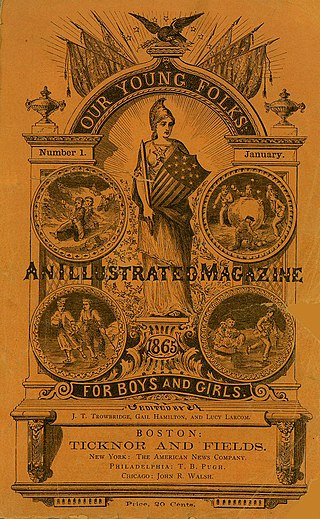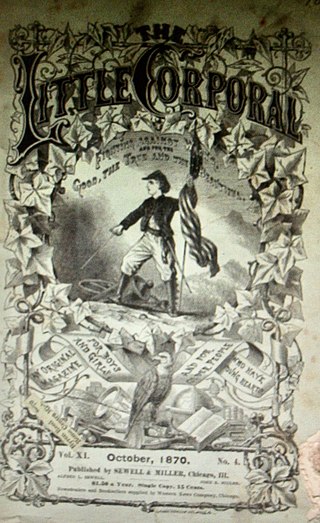
Lyman J. Abbott was an American Congregationalist theologian, editor, and author.

Harriet Elisabeth Beecher Stowe was an American author and abolitionist. She came from the religious Beecher family and wrote the popular novel Uncle Tom's Cabin (1852), which depicts the harsh conditions experienced by enslaved African Americans. The book reached an audience of millions as a novel and play, and became influential in the United States and in Great Britain, energizing anti-slavery forces in the American North, while provoking widespread anger in the South. Stowe wrote 30 books, including novels, three travel memoirs, and collections of articles and letters. She was influential both for her writings as well as for her public stances and debates on social issues of the day.

Henry Ward Beecher was an American Congregationalist clergyman, social reformer, and speaker, known for his support of the abolition of slavery, his emphasis on God's love, and his 1875 adultery trial. His rhetorical focus on Christ's love has influenced mainstream Christianity through the 21st century.

Lyman Beecher was a Presbyterian minister, and the father of 13 children, many of whom became writers or ministers, including Harriet Beecher Stowe, Henry Ward Beecher, Charles Beecher, Edward Beecher, Isabella Beecher Hooker, Catharine Beecher, and Thomas K. Beecher.

Alice Cary was an American poet, and the older sister of fellow poet Phoebe Cary (1824–1871).

Edward Everett Hale was an American author, historian, and Unitarian minister, best known for his writings such as "The Man Without a Country", published in Atlantic Monthly, in support of the Union during the Civil War. He was the grand-nephew of Nathan Hale, the American spy during the Revolutionary War.

Edward Eggleston was an American historian and novelist.

George Cary Eggleston American writer and brother of fellow writer Edward Eggleston (1837–1902). Sons of Joseph Cary Eggleston and Mary Jane Craig. After the American Civil War he published a serialized account of his time as a Confederate soldier in The Atlantic Monthly. These serialized articles were later collected and expanded upon and published under the title "A Rebel's Recollections."

St. Nicholas Magazine was a popular monthly American children's magazine, founded by Scribner's in 1873 and named after the Christian saint. The first editor was Mary Mapes Dodge, who continued her association with the magazine until her death in 1905. Dodge published work by the country's leading writers, including Louisa May Alcott, Frances Hodgson Burnett, Mark Twain, Laura E. Richards and Joel Chandler Harris. Many famous writers were first published in St. Nicholas League, a department that offered awards and cash prizes to the best work submitted by its juvenile readers. Edna St. Vincent Millay, F. Scott Fitzgerald, E. B. White, and Stephen Vincent Benét were all St. Nicholas League winners.

Mary Elizabeth Mapes Dodge was an American children's author and editor, best known for her novel Hans Brinker. She was the recognized leader in juvenile literature for almost a third of the nineteenth century.

Charles Beecher was an American minister, composer of religious hymns and a prolific author.

The Harriet Beecher Stowe House is a historic home in Cincinnati, Ohio which was once the residence of influential antislavery author Harriet Beecher Stowe, author of the 1852 novel Uncle Tom's Cabin.

Orange Judd was an American agricultural chemist, editor, and publisher.

The Harriet Beecher Stowe House is a historic house museum and National Historic Landmark at 73 Forest Street in Hartford, Connecticut that was once the home of Harriet Beecher Stowe, author of the 1852 novel Uncle Tom's Cabin. Stowe lived in this house for the last 23 years of her life. It was her family's second home in Hartford. The 5,000 sq ft cottage-style house is located adjacent to the Mark Twain House and is open to the public. It was listed on the National Register of Historic Places in 1970, and declared a National Historic Landmark in 2013.

Edward Beecher was an American theologian, the son of Lyman Beecher and the brother of Harriet Beecher Stowe and Henry Ward Beecher.

Originating in New England, one particular Beecher family in the 19th century was a political family notable for issues of religion, civil rights, and social reform. Notable members of the family include clergy, educators, authors and artists. Many of the family were Yale-educated and advocated for abolitionism, temperance, and women's rights. Some of the family provided material or ideological support to the Union in the American Civil War. The family is of English descent.

Calvin Ellis Stowe was an American Biblical scholar who helped spread public education in the United States. Over his career, he was a professor of languages and Biblical and sacred literature at Andover Theological Seminary, Dartmouth College, Lane Theological Seminary, and Bowdoin College. He was the husband and literary agent of Harriet Beecher Stowe, author of the best-seller Uncle Tom's Cabin.

The Hoosier Schoolmaster: A Story of Backwoods Life in Indiana is an 1871 novel by the American author Edward Eggleston. The novel originated from a series of stories written for Hearth and Home, a periodical edited by Eggleston, and was based on the experiences of his brother, George Cary Eggleston, who had been a schoolteacher in Indiana. The novel is noted for its realistic depictions of 19th-century American rural life and for its use of local dialect.

Our Young Folks: An Illustrated Magazine for Boys and Girls was a monthly United States children’s magazine, published between January 1865 and December 1873. It was printed in Boston by Ticknor and Fields from 1865 to 1868, and then by James R. Osgood & Co. from 1869 to 1873. The magazine published works by Lucretia Peabody Hale, Harriet Beecher Stowe, Horatio Alger, Oliver Optic, Louisa May Alcott, Thomas Bailey Aldrich, John Greenleaf Whittier, Henry Wadsworth Longfellow and Frances Matilda Abbott.

The Little Corporal was a monthly children’s magazine published in Chicago Illinois from 1865 to 1875 and became the first children's periodical in the United States to gain a nation-wide readership. The magazine had a strong emphasis on patriotism and had the motto "Fighting against Wrong, and for the Good and the True and the Beautiful."




















